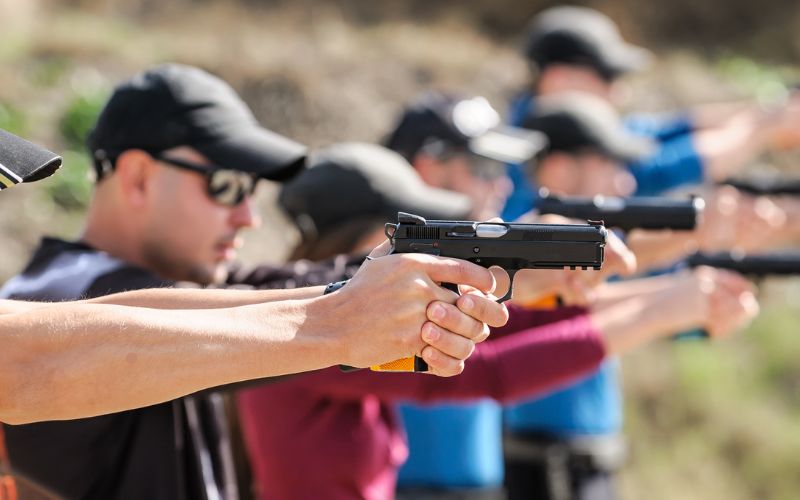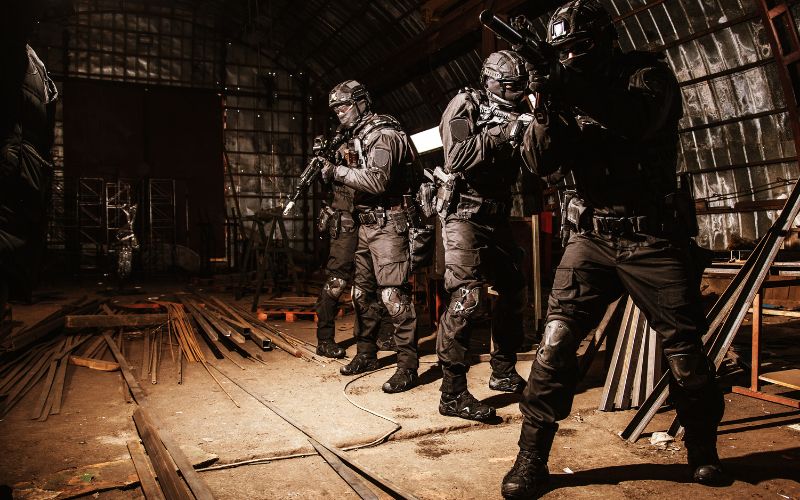Nutrition Tips for Maintaining Peak Tactical Fitness

Performance often determines success or failure in tactical fitness. Therefore, it’s essential to fuel your body for the best results. Whether you are a soldier, first responder, or high-performance athlete, you need more than just training to reach your peak. Nutrition plays a key role in achieving and maintaining top tactical fitness. The body will only perform better if you fuel it with energy correctly. Read the full blog to ensure you peak during performance time and recover better.
Role Of Nutrition In Training

Everybody knows that getting physically fit to train in the Special Forces is very important, yet most members need to see the role of nutrition. Undoubtedly, physical fitness is a must-have for anyone hoping to meet standards. Falling short can bring such things as failing to enlist or being dropped on the first day of training, but the benefits a nutrition plan can get for a strong one might take more work. Nutrition is the direct root from which all physical fitness levels will spring.
What If I Choose To Ignore My Nutrition?
Everyone has a natural biological setpoint regarding weight and body composition. This is why some people are naturally skinny and have a smaller appetite, while others are muscular and have bigger appetites. For those already at an ideal weight for their performance, dieting may remain the same as their results.
However, with a candidate who is rather severely overweight or underweight, more than training alone will be needed. A diet plan with a caloric surplus for weight gain or caloric deficit for weight loss is necessary to achieve the desired weight. Training without appropriate nutrition is like running an engine without fuel; little progress will be made.
Nutrition Tips For Peak Military Fitness

Adjusting your diet to match your tactical training, climate, and personal needs is a powerful tool for staying prepared. By choosing the right foods and listening to your body, you can meet the physical and mental challenges ahead, helping ensure you are ready for your next mission or goal.
1. Prioritize protein for muscle maintenance and recovery
No man’s diet is complete and on track without protein, regardless of his focus on developing tactical fitness. It promotes the preservation and recovery of muscles needed to repair muscular tissue stressed during intense, strenuous training or exhausting physical activity. When appropriate and adequate protein is consumed within the body, you’ll allow your muscles to work more quickly in the recovery stages, and this is helpful for strength and endurance accumulation over time. This will be about 1.2-2.0 grams of protein per kilogram of body weight daily, depending on how intense your workout and your specific needs are in building muscles.
For high-quality sources of proteins, it is best to choose among a variety of meats that do not contain saturated fats. For vegetarians, these sources can include high-protein options like lentils, quinoa, and tofu. Timing is also essential because it allows for a constant supply of nutrients into the body to support muscle repair and growth; thus, it is necessary to consume protein regularly, especially after training. It will help you recover and prepare your body for the next training session.
2. Carbohydrates: The Body’s Primary Fuel Source

Carbohydrates are an absolute must for any high-intensity or endurance activity. They represent a source of fuel to the body. For the tactical professional, energy needs to be maintained over extended periods of tactical workouts, reflexes quick, and mental acuteness sharp. Carbs will maintain glycogen levels- a reservoir of power that the body can utilize in intense physical labor. If carbs are not adequately ingested, the signs of fatigue, less endurance, and lack of focus start to manifest rapidly. It all negatively impacts the outcome of high-pressure events.
Daily carbohydrate intake will vary according to activity levels, but most people are supposed to take between 3 and 6 grams per kilogram of body weight. If you train hard, consume 3-4 hours before to maximize the storage of complex carbohydrates, eventually providing the needed energy.
3. Don’t Forget Fats: Essential for Endurance
While fats are widely misunderstood, they are necessary for any tactical fitness nutrition plan, especially those performing activities lasting longer or at a medium intensity. Fats have a slow release of energy, so you can certainly last that long in your physical tasks. It is not just about providing energy; healthy fats promote the production of hormones to help in recovery, the maintenance of muscles, and overall well-being.
Fats should comprise 20-35% of your daily caloric intake. Good sources of fats include unsaturated fats, such as olive oil, avocados, nuts, and seeds, while omega-3 fatty acids are found in foods such as salmon and chia seeds. These fats provide energy, support cardiovascular health, and reduce inflammation. However, a high-fat meal before strenuous exercise is undesirable because fats take longer to digest. Instead, spread healthy fats throughout your meals and snacks to provide sustained energy for recovery.
4. Hydration
Hydration is one of the most underemphasized yet crucial elements for peak performance, especially regarding tactical fitness.
Generally, hydration should be between 2 and 3 liters daily, depending on body size, nature of activities, and environmental heat. Moreover, electrolyte balance needs to be consulted for those engaged in intensive and extended activities. Electrophysiological fluids like sodium, potassium, and magnesium are lost in sweat during tactical drills or other intense workout.
These fluids are important for maintaining fluid balance and controlling muscle contraction and relaxation. With the availability of drinks that have added electrolyte content, people may avoid some form of cramping condition and help endurance. Drink approximately 500 ml (17 oz) of water one hour before activity, and hydrate in small amounts to maintain hydration levels. If the exercise session is more than an hour, supplementation of electrolytes is required to replenish fluids lost.
5. Micronutrients: The Small but Mighty Essentials
Two major micronutrients that fit the profile for tactical fitness include Vitamin D and calcium, which contribute to bone health. Tactical professionals are more prone to fractures, so adequate intake of nutrients will be helpful for them in terms of the risk factors. Vitamin D can be obtained through sunlight exposure or fortified foods. Calcium can be obtained from milk products, leafy vegetables, and fortified substitutes.
Another very essential nutrient is iron, which is important for the body’s oxygen-carrying capacity and influences endurance. Iron can be derived from red meat, spinach, and legumes and is best absorbed with foods high in Vitamin C, such as bell peppers or oranges. Other antioxidants include berries, nuts, and leafy greens, which help reduce inflammation and recovery after intense activity.
6. Customize your diet to your training phase

Tactical fitness consists of training in endurance, strength, training like a tactical operator, and recovery. Based on the phase of your current training, your nutritional intake differs. The intake ratio maintains your body with all the optimal performance and recovery requirements.
A higher carbohydrate intake is required to maintain the glycogen level in the endurance phases. This will include oatmeal, brown rice, and sweet potatoes for prolonged activities. In strength phases, increase protein intake through nutrient-dense options like Greek yogurt, eggs, and lean meats to help stimulate muscle growth and repair. Balance healthy fats, moderate carbohydrates, and adequate protein in recovery phases. Anti-inflammatory foods such as fatty fish, leafy greens, and turmeric can support muscle recovery and help reduce post-training soreness.
7. Consider Supplementation with Caution
For most tactical athletes, an appropriate diet will provide needed nutrition, but some supplements can be useful if deployed wisely. Caution should be exercised in implementation to avoid unnecessary supplements that might be ineffective or even detrimental. A healthcare provider can be consulted before initiating new supplements to ensure proper choice. People with nutritional gaps in their diet may be helped by using a general multivitamin supplement to help them fill in essential nutrients to complement, not replace, their nutrient-rich diet.
Conclusion
Being tactically fit is more than physical training. Proper fueling, hydration, and micronutrient intake are required for optimal performance and recovery. Balanced macronutrient intake, adequate hydration, and key micronutrients can help increase endurance, maintain strength, and improve mental focus to attain the peak level of tactical fitness.
Frequently Asked Questions
What to eat before military training?
Generally, high-carbohydrate, low-fat, low-fiber foods are best before exercising. Good pre-exercise snacks are bananas, crackers, dry cereal, and low-fat popcorn. These provide readily available energy without causing discomfort from gastrointestinal spasms during exercise.
What military is regarded as being the fittest?
The U.S. Marine Corps is often known for its very high physical demands. Their boot camp includes intense physical conditioning, martial arts training, drill exercises, and educational coursework, making it one of the most physically rigorous training programs.
